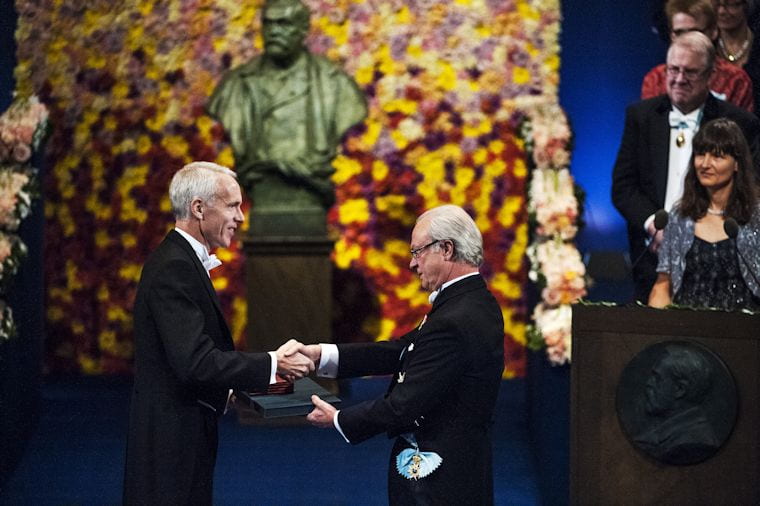We are proud to welcome the 2012 Nobel Laureate in Chemistry, Brian K. Kobilka, MD to the Washington University School of Medicine for the Alexander & Helena and Gustav & Miriam Schonfeld Lecture in Medicine. Dr. Kobilka will be giving his lecture on Thursday, April 10, 2014 at 8:00 a.m. in the Malvern B. Clopton Amphitheater located in Wohl Hospital, lower level. His lecture is titled: The Structural Basis of G Protein Coupled Receptor Signaling.
This endowed lecture honors Dr. Alexander & Helena Schonfeld, as well as their son, Dr. Gustav Schonfeld and his wife, Miriam. This lectureship was established in 1994 by Mrs. Helena Schonfeld, in honor of her son, Gustav Schonfeld, Professor of Medicine at Washington University School of Medicine. Several established lectureships enable the School to bring distinguished guests to speak each year, and this year, Dr. Brian K. Kobilka is our distinguished guest.
Dr. Kobilka is a biochemist and professor of molecular and cellular physiology at Stanford University School of Medicine. Dr. Brian Kobilka has devoted much of his career to studying the structure and workings of G-protein-coupled receptors (GPCRs).

Dr. Kobilka shares the 2012 Nobel Laureate in Chemistry with his co-recipient Dr. Robert J. Lefkowitz, a long-time colleague and former mentor. Their research has been crucial in understanding how G-protein-coupled receptors function.
GPCRs are a large family of cell surface receptors that respond to a variety of external signals. Binding of a signaling molecule to a GPCR results in G protein activation, which triggers biochemical processes within cells. Through this sequence of events, GPCRs help regulate an incredible range of bodily functions, from sensation to growth to hormone responses. Most physiological processes depend on GPCRs. Since many medications act through these receptors, knowledge about the shapes of different receptors can aid in refining drug design. An important break-through for Kobilka and his team came in 2011, when they captured an image through crystallization of the β-adrenergic receptor at the exact moment that it is activated by a hormone and sends a signal into the cell.
Dr. Kobilka grew up in rural Minnesota. His father was a baker and his mother worked with him decorating cakes. He received his B.S. in Biology and Chemistry from the University of Minnesota in 1977 and his M.D. from Yale University in 1981. He completed residency training in Internal Medicine at Barnes Hospital, Washington University School of Medicine, St. Louis, Missouri in 1984. From 1984-1989 he was a postdoctoral fellow in the laboratory of Robert Lefkowitz at Duke University. In 1990, he joined the faculty of Medicine and Molecular and Cellular Physiology at Stanford University. Dr. Kobilka’s research interest has been the structure and mechanism of action of G protein coupled receptors with a focus on adrenergic receptors as model systems.
Photos of Brian K. Kobilka, M.D. licensed under the Creative Commons
Attribution-Share Alike 2.0 Generic license.
